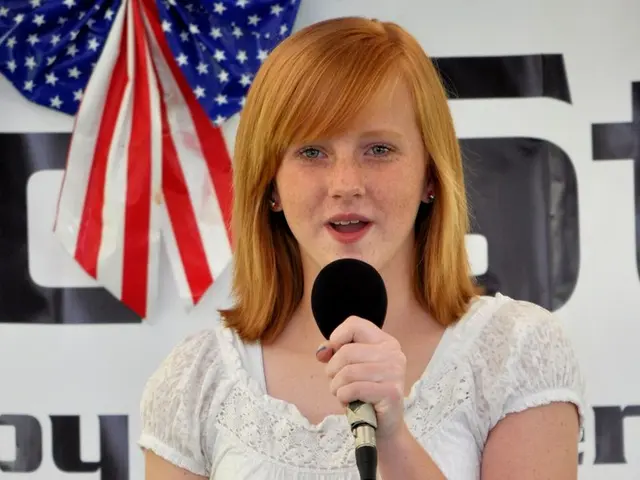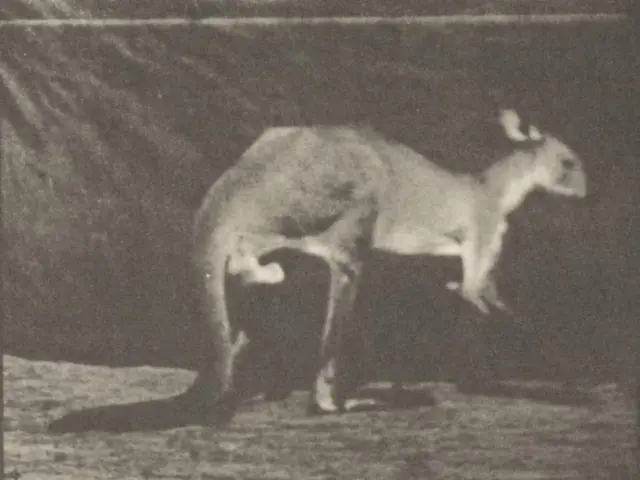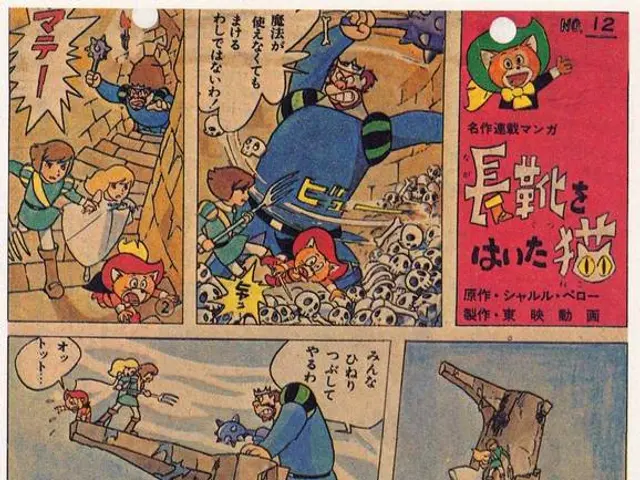Display of Artistic and Historical Artifacts in the Cultural Showcase
Amidst the vibrant town, a blockbuster event occurred. The local street buzzed with excitement, people swarming like a flock of colorful birds, scarves wrapped tight, their faces glowing with eagerness. Kids danced restlessly, clutching strings of floating balloons.
The mayor, a man with smoke-grey hair and decked out in a classic camel coat, cleared his throat, his voice booming over the crowd's murmurs.
"To history revisited, and to remembering who we truly are," he bellowed, and sliced through the ribbon, sparks flying. The breeze swirled, scattering applause like falling leaves.
The attraction was nothing short of a triumph. It had replaced the antiquated theatre, once a dilapidated brick monument of vaudeville. This building was now an imposing beacon of modernity, a cathedral for the people. Plans declared it a symbol of progress, a landmark to propel us onto the map. And guess what? It worked.
Nearly every weekend, families filled the place, tracing timelines with their fingers. Students on field trips would trace history with their footsteps, and those in retirement took long, contemplative strides around the paintings. The exhibits changed monthly, prehistoric remains one week, surrealist art the next. A faceless marble statue embodied the unofficial emblem, and they affectionately named her Vera.
The museum was all the town had hoped for. Clean corridors, grand exhibits, artefacts protected behind panes of glass, glistening sculptures bathed in soft light. Tourists from the highway began to throng cafes, capturing unforgettable moments on their phones, bringing pride to the locals.
Drew, a barista in one such café, frequently watched the visitors come and go from his viewpoint. It wasn't exactly exciting, but safe, predictable. And that was something he liked.
However, the tranquility was shattered by quite a few unsettling incidences. A red-haired boy got lost, only to reappear with a sheepish grin behind the woolly mammoth. A troupe of teens sneaked in close to closing, left one member behind. And a janitor, Gerald, simply vanished.
But it wasn't just the missing persons that stirred unease, it was the whispered rumors. Some claimed the museum to be haunted, constructed over an old graveyard or ruin. Others speculated that the art itself was cursed, delivered from unknown sources. Drew dismissed it all as idle talk. Until he stumbled upon that hidden room.
Drew took a trip to the museum on a Tuesday when the sun poured in through the tall windows. The scent of lemon polish filled the lobby, while overheard whispers of children and shouted orders from the small staff painted a picture of routine.
As Drew leisurely meandered through the polished exhibits, comparing them to a well-rehearsed play, he paused before a portrait of a woman in a red dress. Her eyes seemed to be missing, replaced by empty sockets that sent a shiver down his spine. The plaque only read "Untitled".
With a shrug, Drew moved on, passing by a heavy red velvet curtain that caught his eye. Inscribed on the polished plaque was the mysterious title: The Room of Lost Things.
Intrigued, Drew hesitated but pressed on, immediately stepping foot in a dimly lit room. The air had a strange, earthy scent, reminiscent of fresh soil after a spring shower. Rows of shelves, poor in light, held objects under glass. Each item seemed personal, connected to a life that had once touched these walls. A childhood mitten, a blue teacup stained with lipstick, a child's drawing, a cassette tape labeled "Dad's Song". Each had a tag in neat, bold script, telling its story in a few, evocative words.
But it was upon turning a corner that Drew stumbled upon his own story. Three glass cases stood proudly, each containing a lost item that had once been a part of his life. A yellow gardening glove, a boy's bow tie, and a small, blue toy boat with a frayed white sail. The tag on the boat bore an eerie message, "Drew's First Memory." And beneath, "Drew Ward - Lost."
Drew's heart raced as the memory flooded back.
He was seven.
Snow crunched beneath his boots, the silence of the dark woods all-encompassing. His chest weighed heavy from guilt, dread. He dug desperately, snow covering his hands, his fingers raw.
He pulled out an object, avoiding the sight of it as it cracked under the weight of the soil. It was a photograph, torn, with fading lines that told the story of a memory buried long ago.
Frightened, his littler self buried the evidence, hoping the memory would be forgotten.
But someone watched.
Mrs. Greaves, the old neighbor who frequently gardened barefoot, appeared behind him, her face like a stranger. Her eyes told a story he didn't know, a story that haunted his dreams. She extended her cold fingers, brushing across his cheek as she whispered, "Remember."
Drew woke up, startled, gasping for air. He blinked, disoriented.
Before him stood the museum, an imposing, decaying structure. All the cars were gone, the roads empty. The café was mere rubble, the sign declaring its grand opening torn and faded, its words barely legible. Drew looked into the museum, his heart thudding in his chest as he saw the telltale blackened windows. Something seemed to be watching from within.
For in this forgotten town, the museum was the heart. But perhaps, it was the ghost of a past buried deep.
- The museum, with its clean corridors and grand exhibits, had become the town's pride, attracting tourists who took pictures and shared them on social media, showcasing the vibrant history and lifestyle of the town.
- In the world of fashion-and-beauty, the town's stylish cafes began to reflect the museum's influence, with some offering artisanal coffee and surrealist decor.
- Families enjoying food-and-drink in these cafes often shared tales of their museum visits, fueling discussions and connections in relationships.
- The local pet store saw an unusual influx of customers, as townspeople gifted their pets with 'paw-treasures' from the museum, acting as tokens of their shared history.
- The museum's travel-themed gallery, with its impressive collection of vintage travel posters, inspired many adventurous souls to plan expeditions and explorations.
- Car enthusiasts marveled at the museum's vintage car collection, drawing parallels between these mechanical marvels and the town's own evolution from an antiquated theater to a modern cathedral of progress.
- Book clubs read and debated books on education-and-self-development, discussing and learning from the history and personal-growth stories presented in the museum.
- The museum also hosted shopping events and workshops, allowing visitors to purchase unique items inspired by the exhibits, and even create their own pieces of art.
- A sudden spike in general-news reporting centered around the museum, as rumors of crime-and-justice, involving missing persons and whispered tales of hauntings, began to circulate among the townsfolk.
- Local sports teams, from football to American football, organized games and events at the museum, using it as a backdrop for team bonding and celebrations of sports analysis.
- Frequent, unexpected shifts in the weather seemed to mirror the town's own unpredictable journey, with forecasters drawing parallels between the museum's mysteries and the ever-changing landscape of the town's history, lifestyles, and personal growth.








